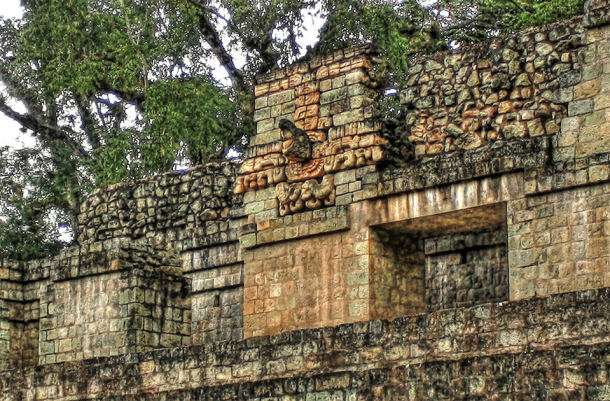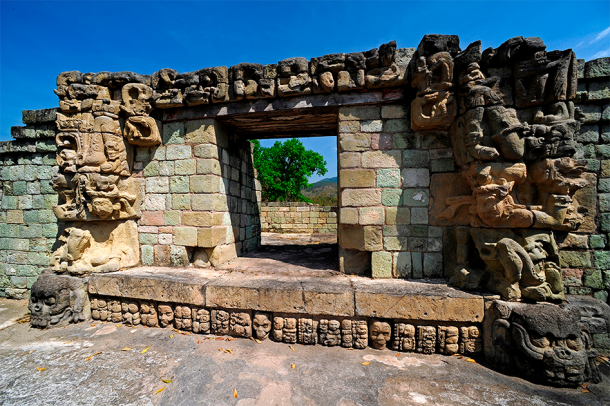A team of scientists in Spain appear to have discovered the elusive formula for lime plaster and mortar used by the ancient Maya of Mexico and Central America. It seems that the incredibly durable Maya plaster, which has withstood the ravages of time and nature magnificently, contained tree bark extracts in addition to the usual mixture of limestone and water.Unlocking the Ingredients of Ancient Maya Plaster
The Maya plaster paste produced by this unique combination was extraordinarily strong once it hardened. It nevertheless was high enough in plasticity and flexibility to avoid cracking and peeling, even after being exposed to the elements for more than 1,000 years.
For more than 10,000 years, lime plaster has been used to seal, bind and protect building blocks used to construct stone buildings and monuments. It was a core construction material for the Maya in the first millennium AD, when they built spectacular stone structures such as pyramids, temples, plazas and palaces that still stand to this day.

The plasters that cover many buildings created by the Maya has proven just as durable as their monuments, showing few signs of decay despite the immense passage of time. That has left scientists eager and anxious to discover their secret lime-making formula, which has remained unknown until now.
“Our study helps to explain the improvement in the performance of lime mortars and plasters with natural organic additives developed not only by ancient Maya masons but also by other ancient civilizations (e.g., ancient Chinese sticky rice lime mortars ),” the scientists wrote in an article explaining their findings in the journal Science Advances .
Besides the Maya and the Chinese, many other ancient civilizations discovered that adding organic materials to lime plaster or concrete recipes could produce a higher quality product. The Romans mixed linseed oil into their lime plaster, for example, while other cultures used animal fats, fruit juices and even blood to spice up their plaster-making formulas.

Temple 10 with macaw head sculpture at Copan Archaeological Site, where samples of Maya plaster were sourced. (Daniel Mennerich / CC BY-NC-ND 2.0 )
The History of Marvelous Maya Masons and their Amazing Mortar
Lime plasters were first used for construction and decoration in the Levant approximately 10,000 years ago. They were produced by mixing carbonate rocks (limestones) with water, creating a dissolved slurry that absorbs carbon dioxide from the atmosphere. In its final form, lime plaster is composed of calcium hydroxide, sand and water.
About 9,000 years later, in 1,100 BC, pre-Columbian civilizations in Mesoamerica discovered the secrets of making lime plaster on their own. The Maya, who lived in what is now Mexico and Central America, eventually began producing their own blend of super-durable lime plaster and mortar, which proved to be highly resistant to both chemical and physical weathering.
Maya masons working during the Classic Period of Maya Civilization (250 to 950 AD) were using mortars and plasters that to this day have still not disintegrated, peeled off or fractured, despite being exposed to humid tropical conditions for 1,200 years or more. This achievement has impressed many researchers interested in the ancient Maya and Mesoamerican culture , and motivated many attempts to recreate their formula for lime making over the years.
In the latest study, a team of material scientists from the University of Granada in Spain analyzed lime plaster samples collected from the Maya archaeological site of Copan, which is located in western Honduras. These samples dated to between 540 and 850 AD, when the Maya civilization was at the height of its prosperity.

Maya plaster samples collected at the Copan archaeological site. (Rodriguez-Navarro et al. / CC BY-NC 4.0 )
Using High-Tech Analysis to Understand Maya Plaster
The Spanish scientists, led by Department of Mineralogy and Petrology professor Carlos Rodriguez Navarro, used several high-tech analytical tools including X-ray diffraction, polarized light microscopy and field-emission scaling electron microscopy to examine the deep crystalline structure of the plaster samples.
Intriguingly, they found that many of the samples were saturated with organic particles of some type, which had been absorbed into the substance’s crystalline structure. The addition of this extra binding material had made the lime plaster stronger and more flexible, adding to its resistance capacity when exposed to environmental factors (sunlight, rain, sandstorms, etc.) that would normally cause plaster to break down.
The crystalline signature of these samples is the equivalent of fingerprints for human beings. The signature was distinct, and could therefore act as an identifying marker.
With this knowledge in hand, the University of Granada scientists then tried to recreate the lime plaster formula that generated this particular crystalline signature. They hired local Maya masons to help them extract sap from the bark of Chukum and Jiote trees, both of which grew in abundance in the region in the first millennium AD. The scientists then made fresh lime plaster in their laboratory, adding the sap extracts to the usual ingredients.
Once it had set, the scientists analyzed the sap-infused lime plaster at the molecular level, to see how it compared to the samples from Copan. In fact, the crystalline structure of the fresh plaster matched the crystalline structure from the Copan lime plaster almost perfectly, and the sap-infused plaster proved to be just as tough, flexible, and weather-resistant as the older version. As of now, it appears the mystery of how the Maya made some of the most durable plaster the world has ever seen has been solved.

The Maya ruins at Copan in Honduras have stood the test of time. ( bennytrapp / Adobe Stock)
Maya Lime Plaster and the Sustainable Construction Movement
The University of Granada researchers who launched this study were not just motivated by historical curiosity. They see potential practical applications for the Maya plaster-making formula, the creation of which demonstrates a superior knowledge of the principles of chemistry and materials science and engineering.
“It is important to understand why these ancient Maya lime-based materials are so durable not only to disclose the ancient Maya masons’ technological achievements but also to design, using a reverse engineering approach, new lime-based plasters and mortars for their use in architectural heritage conservation and in modern, sustainable construction,” the study authors wrote in their Science Advances paper.
In the area of monumental stone construction, several ancient societies built awe-inspiring structures using construction technologies and methodologies that have been lost to history. The discovery of an equivalent formula for Maya lime plaster in experiments undertaken today gives new hope to scientists who want to uncover all the secrets of the monument-building ancient civilizations, which could help us improve modern construction techniques while showing us how to live more in harmony with the natural world.
Top image: Ruins at the Copan archaeological site in Honduras, where archaeologists collected Maya plaster samples for their study. Source: diegograndi / Adobe Stock
Source: ancient-origins.net







